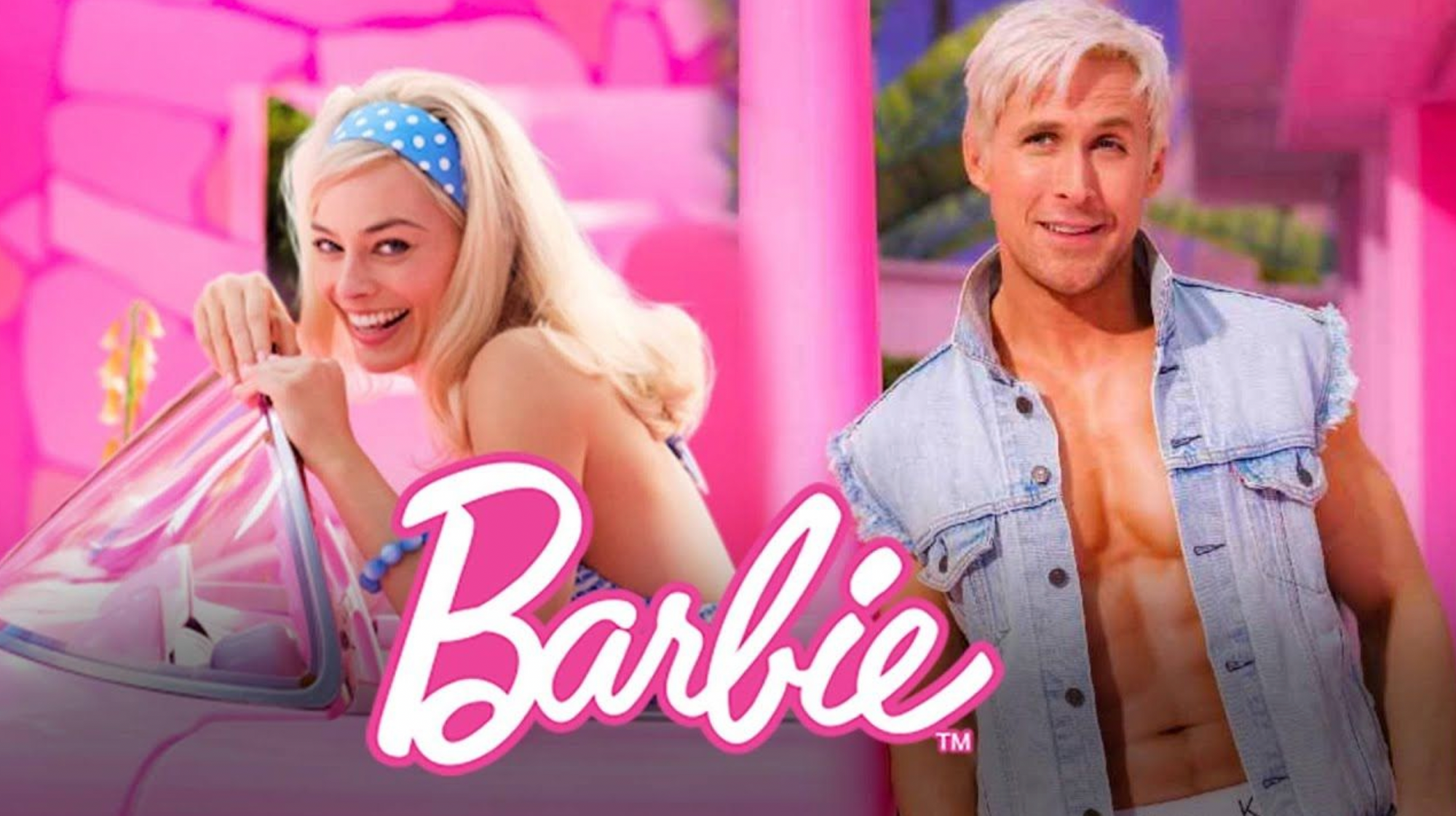Barbie McWorld- Published in IM-1776, August 2023

Escaping the Malibu Longhouse: A Review of Greta Gerwig's "Barbie"
When IM—1776 invited me to write a review of the new Barbie movie, my first impulse was to decline. I watch a couple of movies a year, usually under duress, on account of my aversion to immersion in a crowd of strangers. I find the ennui pervading contemporary American society suffocating. People seem afflicted, discontent, unwell. And the world of advertising and media seems to revel in affliction, incessantly exhorting the virtues of being ordinary. In restaurants these days, one often hears individuals vying over who has the most obscure and complicated health issues. Our descendants will surely deride the culture of these days.
On this occasion though, an intriguing coincidence occurred: a friend relayed his intentions to be in Las Vegas that weekend and said he planned to watch Barbie. I, too, found myself in Vegas for the first time in months that same weekend and consequently ended up in a cinema for the first time in five years.
The movie theater, situated in Las Vegas’s Town Square AMC, is approximately a mile away from the Vegas Strip. At the concession stand the young adults bustled behind counters amidst a sea of fallen popcorn, all appearing vaguely unwell. The menu boasted that a large serving of popcorn popped in highly inflammatory canola oil contained over 3,000 calories. The healthiest drink option was Dasani, produced by Coca-Cola by bottling Detroit’s municipal water and sold at a 133-fold markup. A standard 20 fl oz bottle of Dasani, typically priced at $2, here costs $5.29.
As I settled into my seat in the movie theater, gripping my overpriced tap water, I wondered if the forthcoming two hours would offer any insight into the present state of society. Beginning with a tribute to Kubrick’s 2001: A Space Odyssey, the film depicted young girls in a prehistoric backdrop, shattering antiquated baby dolls along with their constricting expectations. Rather than the single path of motherhood, they could embrace multiple Barbies, signifying a dazzling array of lifestyles and careers. This theme of anti-natalism recurred throughout the movie. ‘Midge, Pregnant Barbie,’ a once-real Barbie doll deemed so contentious in the early 2000s that Mattel discontinued her, served in particular as the subject of mockery.
My expectation of the Barbie movie being deeply feminist and excessively woke shattered when confronted with an underlying message that appeared disconnected and purposeless (not to mention highly incoherent). The film ostensibly extolled the virtues of women’s empowerment: it included, for instance, Nobel Prize-winning Barbie, a Black Female President Barbie, and an all-female supreme court. But empowerment was relegated to the realms of Barbie World alone. In the ‘Real World’ of the film, by contrast, best embodied by America Ferrera’s character Gloria, women face overwhelming societal pressures. In this reality, girls aspire to engage with a relatable ‘ordinary Barbie’, as opposed to the extremely attractive, eternally blissful one portrayed by Margot Robbie. Unsurprisingly, this portrayal was deemed offensive, according to the mandate that Barbie must represent the prevailing state of American women: overweight, ailing and trapped in boring and depressing jobs.

My naive idea of Barbie being innocuous entertainment quickly gave way to the recognition that the film is a two-hour advertisement orchestrated by Barbie-maker Mattel. The $100 million invested by the toy manufacturing company to produce the film has undoubtedly proved a shrewd investment: specifically, it has bestowed upon parents and consumers at large the validation to embrace bimbo Barbie without reservation. The movie has breathed new life into a 64-year-old plastic doll with declining sales, and society has welcomed this advertisement with open arms. Barbie imagery and memes have been dominating the internet for weeks, and hordes of young women have flocked to the theaters, squeezing their bodies into over-tight pink dresses and high heels.
After enduring a decade of #Girlboss energy, the “leaning-in” philosophy popularized by Sheryl Sandberg, and ultimately the symptomatic #MeToo movement, women have been given a chance to embrace the hyper-feminine roles of the past that they had missed so dearly, and enjoy the relief of the celebration of the bimbo persona. Barbie, in her unthinking, carefree essence, represents a form of liberation from the pressures of modernity. Many women, too embarrassed to admit their desire for such freedom, have secretly craved it. The movie’s main teenage protagonist Barbie sets to find in the Real World, initially seen in a black hoodie and scornful towards everything feminine, culminates her journey united with her mother through the auspices of Barbie, smiling and dressed in a bright pink dress. The simple desire to be unburdened, feminine, and carefree resonates with females across the spectrum.
Mattel has cleverly portrayed itself as the subject of mockery and an accomplice in the joke, acknowledging its all-male executive team and jesting at its own expense. Yet the average viewer, for their part, will remain unaware that the joke is ultimately on them: an unwitting audience paying to watch a two-hour commercial (even more so now that Mattel is reportedly considering launching its own Cinematic Universe). The film’s central motif, it seems, is the recognition that the audience are fools. The incongruities in the film’s messaging every five minutes don’t matter, because inconsistencies go unnoticed. Barbie emerges as both a feminist icon and a representative of fascism: emblematic of our times’ perplexing character, devoid of principles and integrity, wrapped in a pink candy-colored bow.
While the graceful Margot Robbie’s performance as Barbie herself was overall fine, the main relief from the movie’s vacuity came from Ryan Gosling. Playing the central male character ‘Ken’, Gosling seizes control over Barbie World to build ‘Kenland’, driven by his encounter with the patriarchal order from his trip into the Real World. Considering that the Barbie movie’s production and direction were overseen by very successful women making a long advert funded by men, this narrative of patriarchy appears as either strangely ironic or a coping mechanism.
Barbie culminates in a speech delivered to each individual Barbie, emancipating them from the clutches of patriarchal Kenland. This is Barbie’s John Galt moment. But I was saddened to witness numerous women reposting this speech across social media. The scene lacked the gravitas it aspired to convey, instead celebrating the mediocrity of women as something worthy of exaltation. At the very end, Barbie relinquishes allure, happiness, and immortality to assume the role of a normal girl, a narrative device intended to leave audiences feeling gratified about their own lives. Why can’t we aspire to attractiveness, joy, and timelessness? Personally, I harbor no desire to be an average American woman. Normalize instead being rich, hot, successful, even immortal.
To those who find the expenditure of $5 on tap water normal and the prospect of watching a two-hour advertisement entertaining, the Barbie movie may prove enjoyable. It might even tickle you pink. But for those of us who wish to retain our individual agency, and aspire to something bigger, the reality is that the actual real world world offers a myriad of better alternatives.
